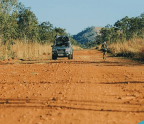Singing Cowboys & TOXIC TENTS

Back in 2010, in the wake of the Global Financial Crisis, when the Aussie dollar reached parity with the US Greenback, I took advantage of low retail prices and shelled out for my first piece of ultralight hiking kit: a tent that weighed just over a kilogram. It compressed to about the size of a one litre drink bottle and made the prospect of adventures in the wild seem effortless
On the packaging, however, I noticed a warning sticker: “This product contains chemicals known to the State of California to cause cancer and birth defects or other reproductive harm.” Surely this svelte object could not cause harm, I told myself. Nonetheless, I checked with the retailer, who wrote, “To meet the flammability standard in California (CPAI-84), this tent is treated with a flame retardant chemical additive.”
Flame retardants are far from benign, however. Decades of research has associated them with hormone disruption, thyroid problems, early puberty, neurotoxicity, developmental problems, liver damage, and cancer. And when used in tents, chemical flame retardants don’t just ‘stay’ in the tent. They leech out of the fabric onto the hands of people who set up the tent, which can then be transferred from your hands to your mouth or ingested after touching food. The chemicals have also been detected in the air inside tents and can be inhaled.
So when I began more recently searching for another lightweight tent to go hiking with my three young children, I wanted to avoid one treated with flame retardants; children are more vulnerable to exposure
You’re reading a preview, subscribe to read more.
Start your free 30 days





